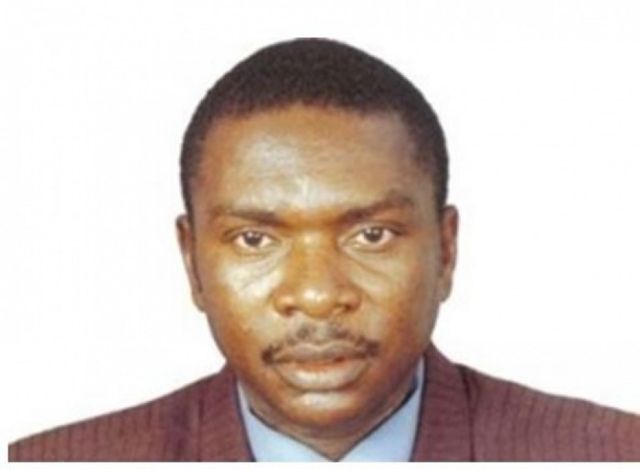By Spy Uganda
Prosecutors had been hunting him down for more than two decades following his indictment by the International Criminal Tribunal for Rwanda in 2000, but actually, he had died of tuberculosis about 16 years ago at the age of 50. “Following a challenging and intensive investigation, the OTP (office of the prosecutor) has determined that Mpiranya died on October 5, 2006, in Harare, Zimbabwe,” the Mechanism for International Criminal Tribunals announced in The Hague.
It added that Mpiranya was the “last of the major fugitives indicted by the International Criminal Tribunal for Rwanda (ICTR) and alleged to have been a senior leader of the 1994 Genocide against the Tutsi in Rwanda”. Charged with war crimes, genocide and crimes against humanity, Mpiranya was the second on the wanted list until the arrest of alleged genocide financier Felicien Kabuga near Paris two years ago. There are now only five outstanding fugitives wanted by the UN tribunal based in The Hague and Arusha.

At the time of the genocide, officials said Mpiranya was head of the presidential guard, which was said to be behind targeted assassinations during the 100-day massacre of Tutsis and moderate Hutus. Mpiranya allegedly ordered the murder of then prime minister Agathe Uwilingiyimana and the 10 Belgian soldiers protecting her as well as leading politicians and their families in the early hours of the genocide on April 7, 1994.
On April 6, the evening before, a plane carrying Rwanda’s president Juvenal Habyarimana was shot down as it made its way to Kigali International Airport, killing everyone on board. Habyarimana had just returned from a regional meeting in Tanzania, where he had thrown his weight behind the terms of the 1993 Arusha Accords that was supposed to end a three-year war between the Hutu government in Kigali, and a Tutsi rebellion, according to AFP.
After Habyarimana’s assassination, leaders of the Rwandan Armed Forces, top police officials, the UN military and some civilian leaders held an emergency meeting. Uwilingiyimana, a moderate Hutu and Rwanda’s first female prime minister, was made to lead the country but Rwanda’s radical Hutu leaders were not okay with it.

On the morning of April 7, Mpiranya and some two military officials “ordered their subordinates… to search for the prime minister, Agathe Uwilingiyimana, in order to kill her”, according to the prosecutor’s indictment for the former International Criminal Tribunal for Rwanda (ICTR). Other leading political figures who supported the Arusha Accords were also killed. The presidential guard commanded by Mpiranya was behind the attacks, according to prosecutors. The killings aimed “to create a political vacuum and derail the implementation of the Arusha Accords”, per the indictment.
Who Was Mpiranya?
He comes from the former province of Gisenyi, in northern Rwanda, where Habyarimana and some Hutu military leaders also came from. Mpiranya graduated from military college in Kigali in 1983 and was assigned to the national police force. As the army fought the rebels of the Rwandan Patriotic Front (RPF), which was led by Paul Kagame now president, Mpiranya was transferred to the presidential guard battalion in 1991 and was promoted to commander two years later.

After the genocide in 1994, Mpiranya fled to Cameroon and then moved to the Democratic Republic of Congo, where many accused of being involved in the genocide had fled and formed a rebel group, the FDLR. Mpiranya became a member of the rebel group in 1998 and commanded a brigade that fought alongside Zimbabwe’s army during the Second Congo War. Becoming known as “Commander Alain”, senior Zimbabwean officers admired and respected him. So when Mpiranya was first indicted in September 2002, his allies in Zimbabwe slipped him into the country on a Zimbabwean military plane.
His wife and children joined him but they later left for Britain. “For four years, Mpiranya was able to avoid arrest and find some refuge in Zimbabwe, where he lived in a reasonably affluent area of Harare,” prosecutors said. Using a fake identity, he started a small transport business but it failed. “The final years of his life were marked by anxiety and fear that his location would be discovered and that he would be tried for his crimes,” according to prosecutors.
When he fell ill with tuberculosis in 2006, he was using the name Ndume Sambao. He died on October 5, 2006, in Harare’s West End Hospital and was buried in Granville cemetery on the southern edge of Harare under his alias — Ndume Sambao. His burial was attended only by family and associates, prosecutors said, adding that “since October 2006, Mpiranya’s family and associates have gone to great lengths to conceal his death and place of burial.”
“They have repeatedly provided false statements to investigators and coached those who knew of Mpiranya’s presence and death in Harare to lie if questioned. His tombstone was purposefully designed to thwart its discovery.”
Last September, investigators said they seized a computer and other material in a raid in a European country (the country was not named). They found photos of a funeral and a hand-drawn picture of a gravestone that led them to where Mpiranya is buried.




